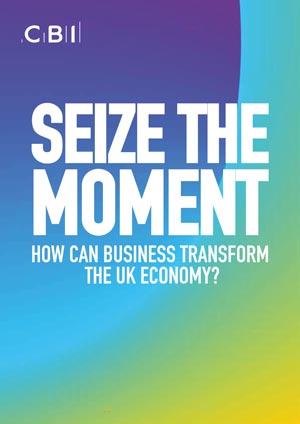David Fowler MIStructE, Editor
david@maintenanceandengineering.com
@MaintOnLine

The last few weeks have brought numerous signs that confidence is returning to the economy. The CBI’s latest monthly Growth Indicator reported private sector activity overall increasing at its fastest pace since August 2015.
The IHS Markit/CIPS UK purchasing managers’ index rose to 65.6 in May, above the previous record of 61.0 in July 1994. The index combines survey responses on the direction of change of factors including new orders, output, and employment, with a value over 50 indicating an increase over the previous month.
Manufacturing production rose at one of the fastest rates in the history of the index, with domestic and overseas demand continuing to revive, and new export orders rising. In fact, according to the survey, pressure on capacity was growing so that some manufacturers were reviving recruitment plans and increasing staff – although there was also some evidence that the export gains were skewed towards larger firms.
After the turmoil and travails of the last 18 months, many will be tempted to breathe a sigh of relief at the promise of a return to a semblance of normality. But although understandable, is that the right response?
Not in the CBI’s view. Now presents a unique chance, it argues, to “Seize the moment” and transform the economy. The time is right, it believes, to build a decarbonised economy, an economy built on innovation, regionally thriving, more productive and more inclusive. It has launched an economic plan backed by a five-year campaign to put these ideas into action.

Many might think such grand initiatives are all very well for big business, but don’t really connect with reality as experienced by small and medium firms. But the CBI believes its plan can embrace all sectors and sizes of firms. Smaller companies in particular have a role to play in adopting innovative technology, it believes.
The whole question of decarbonisation and how to respond to the government target of net zero by 2035 is a particular concern for smaller firms at the moment. But help is out there.
The advice of Make UK chief operating officer Ben Fletcher is that businesses should approach the twin challenges of net zero and digitalisation/modernisation together. Make UK reports having seen amazing results from SMEs starting out on the path to net zero from “easy wins” (see News). Meanwhile, the Made Smarter Adoption programme, newly extended to north-east England, Yorkshire and the West Midlands, is doing sterling work in helping smaller manufacturers embrace digital technology. And also in this issue, SMMT Industry Forum director of operations Andy Spence stresses how a constant focus on “lean” principles can help in the transition to net zero. Many fall into the trap of thinking they’ve “done” lean – better to think of it as “continuous improvement”, which is never done.
What is certainly clear is that time is running out, and to meet net zero targets businesses must start now.
But the challenge need not be as daunting as it first seems. The key point is that decarbonisation can go hand in hand with modernisation – and greater productivity will follow, to everyone’s benefit.
Moving on
With a tinge of regret I have to report that this will be my last issue as editor of Maintenance & Engineering, as I hand over to my colleague Nick Barrett. It’s been fascinating over the last three and a half years to discover the highly impressive levels of skill, innovation and technology being applied in a field which is severely under-appreciated.
Maintenance engineers have the uniquely tough job of keeping production running at optimum levels while maximising the life of expensive equipment, yet keeping downtime to a minimum.
But Industry 4.0 is bringing about a genuine revolution, exploiting technology from sensors and the internet of things in monitoring (and predicting) equipment performance, to augmented reality putting key information literally in front of engineers working out in the field (as discussed in this month’s Maintenance & Asset Management Journal). There’s a growing realisation of the potential productivity gains, and of the value of the skilled people doing the work.
So there’ll be no shortage of stories for M&E to report on as we go forward. I’d like to thank everyone who’s supported M&E during my time as editor, and to wish Nick, the magazine, and all our readers continued success into the future.

